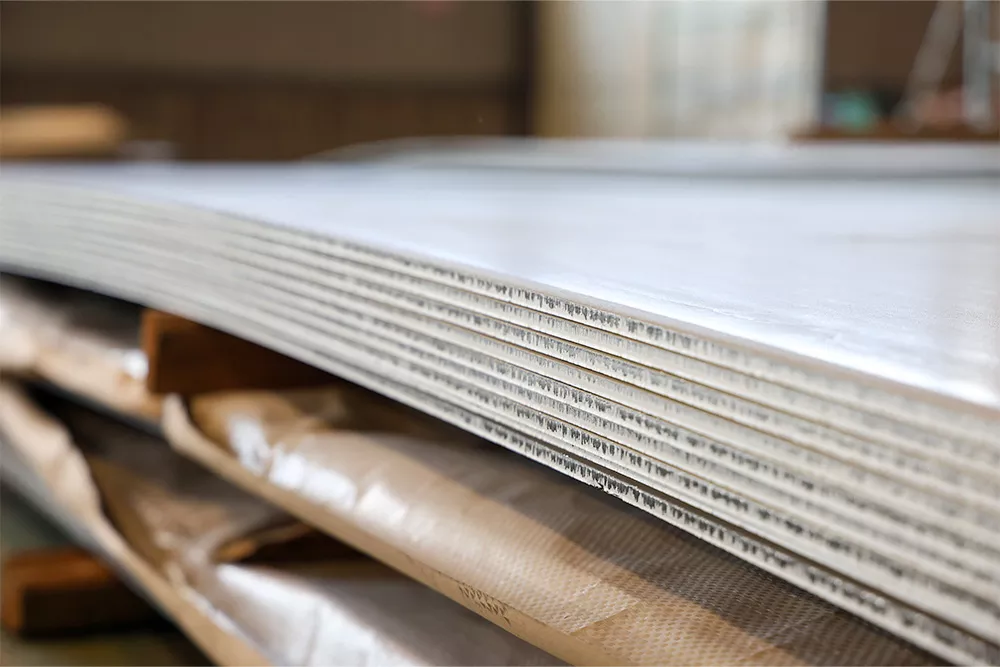Stainless steel is widely used in many industrial and engineering applications due to its excellent corrosion resistance and mechanical properties. However, there are many types of stainless steel, and different types of stainless steel are suitable for different working environments and application needs. In this article, we will explore the differences between duplex stainless steel and heat-resistant stainless steel in detail to help you understand how to make appropriate choices in different application scenarios.
I. Overview of duplex stainless steel
1. Composition and structure
Duplex Stainless Steel (Duplex Stainless Steel) is a type of stainless steel with both austenitic and ferritic phase structures, usually containing around 50% austenite and 50% ferrite. Typical duplex stainless steels include 2205 and 2507. This duplex structure allows the material to have the excellent properties of both phases.
2. Performance characteristics
- high strength: The yield strength of duplex stainless steel is usually about double that of ordinary austenitic stainless steel (e.g., 304, 316), so thinner material can be used under the same conditions, thus reducing equipment weight and cost.
- Excellent corrosion resistance: Especially in chloride environments, duplex stainless steel exhibits excellent resistance to pitting and crevice corrosion, and is suitable for use in marine, chemical, and petrochemical applications.
- Good welding properties: Duplex stainless steel is less prone to intergranular corrosion or stress corrosion cracking during welding.
3. Areas of application
Due to its high strength and corrosion resistance, duplex stainless steel is widely used in petrochemical equipment, marine engineering, pulp and paper industry, environmental protection equipment, seawater desalination equipment and other fields.
Second, heat-resistant stainless steel overview
1. Composition and structure
Heat-Resistant Stainless Steel (Heat-Resistant Stainless Steel) is a class of stainless steel specially designed for high temperature environments, and its main feature is that it can maintain good mechanical properties and oxidation resistance at high temperatures. Typical heat-resistant stainless steels include 310S, 253MA and so on.
2. Performance characteristics
- Excellent oxidation resistance at high temperatures: Heat-resistant stainless steel has good oxidation resistance at high temperatures, even in air, oxygen or other corrosive gases environment, still can keep the surface is not oxidized.
- Good high temperature strength: This stainless steel maintains relatively high strength at high temperatures, making it suitable for working environments subject to high temperatures and pressures.
- creep resistance: Heat-resistant stainless steel can effectively resist creep deformation at high temperatures for long periods of time, which makes it widely used in heat exchangers, furnace tubes, heating furnaces and other equipment.
3. Areas of application
Heat-resistant stainless steels are mainly used in equipment and components that need to operate at high temperatures, such as industrial furnaces, heating equipment, boilers, gas turbine components, exhaust systems, etc.
Third, the key difference between duplex stainless steel and heat-resistant stainless steel
1. Performance differences
- corrosion resistance: Duplex stainless steels have excellent corrosion resistance, especially in chloride environments; while heat-resistant stainless steels mainly focus on oxidation resistance and strength in high-temperature environments, and are not as resistant to general corrosive environments as duplex stainless steels.
- temperature tolerance: Heat-resistant stainless steels perform significantly better than duplex stainless steels in high-temperature environments and are suitable for use in extreme high-temperature conditions; duplex stainless steels are better suited for use in ambient to medium-temperature environments, especially in applications requiring corrosion resistance.
2. Application scenarios
- Duplex stainless steel: For applications requiring high strength, corrosion resistance and good performance over a wide temperature range, such as offshore engineering, chemical equipment, etc.
- Heat-resistant stainless steel: Mainly used in high temperature environments, such as industrial furnaces, boilers, exhaust systems and other equipment and components.
IV. How to choose?
1. Environmental conditions
- If the working environment involves chlorides or other highly corrosive mediaIf you have a high requirement for material strength, it is recommended to choose duplex stainless steel.
- If the working environment is high-temperature conditionsFor example, for equipment such as industrial furnaces and boilers, and where the material is required to maintain strength and oxidation resistance at high temperatures, heat-resistant stainless steel is a more suitable choice.
2. Life expectancy
- In corrosive environmentsDuplex stainless steels typically provide a longer service life due to their excellent corrosion resistance.
- In a hot environmentHeat-resistant stainless steel ensures the long-term stable operation of the equipment due to its excellent oxidation resistance and high-temperature strength.
3. Cost factors
- Although both duplex and heat-resistant stainless steels cost more than ordinary stainless steels, choosing the right material for a specific application scenario can avoid over-engineering and wastage, resulting in a better price/performance ratio.
reach a verdict
Duplex and heat-resistant stainless steels each offer different performance advantages and application areas. Understanding their key differences and performance in specific applications is critical for engineers and designers in material selection. Whether facing corrosive media or high-temperature environments, the right choice of material can not only extend the life of the equipment, but also improve the overall reliability and economy of the system.
Weigh the characteristics of duplex and heat-resistant stainless steels to make the best choice for your specific needs to ensure the safety, stability and durability of your equipment in operation.
If you need duplex stainless steel.Siltronic duplex steelwill be your best choice; if you need 310S heat-resistant stainless steel.Hechuang Heat-resistant Steel(Wuxi Hechuang Stainless Steel Co.) will be your best choice!



